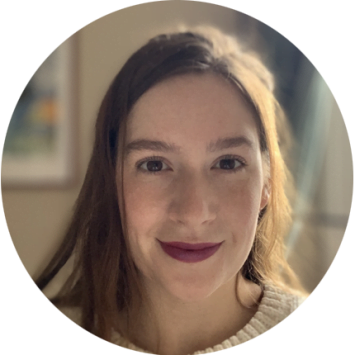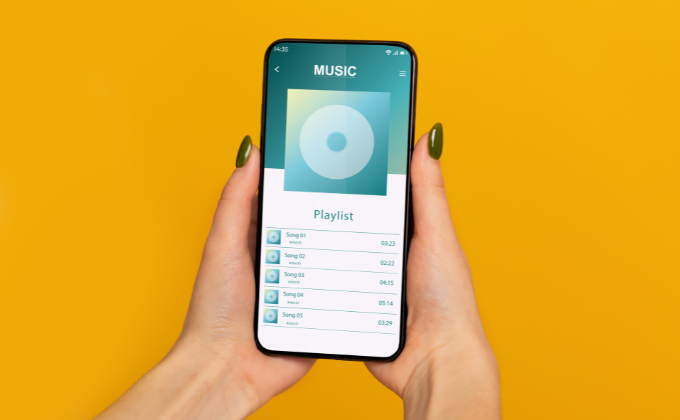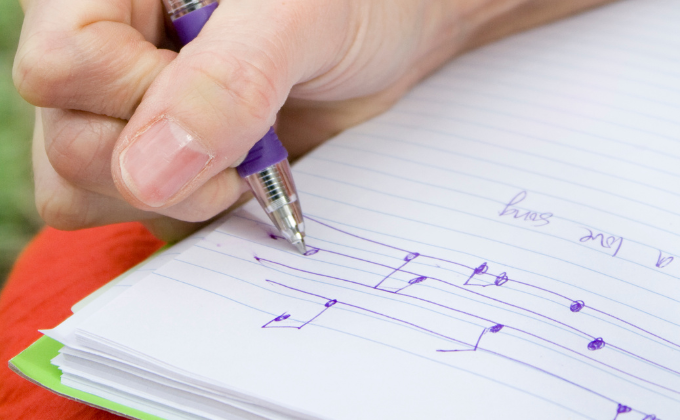
Joanna Shiel is a UK-based piano teacher and has been entering students for exams for over 13 years. She believes that done right, exams can be a great motivator, forming part of a well-balanced musical diet. Her dessert of the month is apple pie.
One of my main goals as an educator is to make myself obsolete. From day 1, I want my students to be path-seekers, taking their own big journey into music, and finding their musical joy. I want them to be artists.
Yet, I often feel that the current systems of music education are too rigid and prescribed.

I used to find myself frustrated at how rarely my students took learning into their own hands. They seemed to find learning music unnatural and clunky – they felt it difficult to make music freely and confidently without a piece of paper in front of them.
We now know that we learn best when we play. Yet, how many of our method books, exam syllabi and Hanon exercises encourage creativity and experimentation? Not many…
So, what’s the solution? Student-led lessons!
Learning From Self-Taught Musicians
A few years ago, I was introduced to Lucy Green’s research on how popular musicians learn music. Here’s an excellent talk from Green about the subject:
These days, many piano teachers teach contemporary music alongside classical instruction. But I still think we have a lot to learn from musicians that don’t learn from teachers.
What are self-taught musicians doing?
When we dive deeper into how these musicians are learning, we find that they:
- Choose their own music
- Learn their favourite songs by ear
- Work alone and with friends who share similar music tastes
- Follow their own interests, without a progressive laid-out plan
- Practice independently without an adult or teacher telling them what to do
- Integrate all skills of music learning at once, such as performing, listening and improvising
Isn’t it interesting that traditional piano lessons often go against so much of the above?
Putting the Piano Student in Charge
There’s no changing the fact that any education we give to students needs to be structured in some form, but let’s look at how we can integrate some of the ways self-taught musicians learn into our own piano instruction by putting the student in charge.
Practise Autonomy
It’s important for piano students to learn how to set their own path of learning. And it’s a skill that needs refining. You’ll find that some students will be better at doing this than others – but it can always be learnt.
Goal-Setting
I always start the year with Student Self-Assessment forms, which we then review each semester. At first, some students will need help choosing what goals to work towards.
As your students are more exposed to everything that learning the piano has to offer, they’ll begin to share what they love the most.

Subscribe to the newsletter and get the student self-evaluation form.
Enter your details to subscribe to the newsletter for piano teachers with information, tips and offers.
I hate spam as much as you do! I will only send you emails related directly to piano teaching and you can unsubscribe at any time.
If you’re a member of Vibrant Music Teaching, you can find our Student Self-Assessment Forms in the VMT Printable Library. Not a member? Learn more at vibrantmusicteaching.com.
Choosing Their Own Pieces
Give students the choice of which method books they want to learn from. Later, as they start to explore repertoire books, you can give them a playlist of pieces from the book to choose from.
Is there a popular song they want to learn? Encourage them to share. These days there are arrangements for every piece out there for every level, or you can even create your own arrangement together in their lessons.
An “Ear First” Approach
Develop your student’s ear actively at every opportunity, before sheet music is introduced. Make it second-nature to approach music in this way.
You can encourage active listening by asking students about:
- Phrasing
- Musical patterns
- The story or character of a piece
- Articulation
- Harmony and chord progressions
Show, Don’t Tell
When teaching a new concept, contextualise it first by modelling how it fits aurally into existing concepts, and then really solidify learning by experimenting with it.
For example, when teaching a new rhythm you could:
- Play it against a variety of already learnt rhythms
- Move parts of the body to it (clap, stomp, jog etc.)
- Learn it as part of a riff or musical pattern
- Experiment with it through echoes or question-and-answer phrases
- Use it in improvisation or in a composition
Once it’s internalised and secure, then it’s time to introduce the theory behind it by showing how it’s written and how many beats it’s worth – but not before!
Learning by Ear
I like to choose a pool of about 5 popular, famous songs that students generally love to play. These could range from just the piano portions to the complete songs in a variety of styles.

Together, we’ll choose a part of the song to figure out on the piano or on percussion instruments. It could be a:
- Repeating riff
- The left-hand pattern
- Chords or harmony
- Drum pattern
- Vocal line – they could sing this if they like!
Give space for students to engage with their own learning first. If they’re struggling, ask leading questions in order to cultivate independent learning, such as:
- Did that go up or down?
- How many times did that part repeat?
- Can you picture the rhythm in your head?
- Was that loud or soft? Connected or spiky?
- Did you notice any patterns?
Playing With Friends
We know how important ensemble playing is in developing reading skills and aural skills. It’s also highly sociable. What people do in groups, they tend to enjoy. We also learn from the different perspectives and insights of our peers.
Workshops
Piano workshops provide excellent opportunities to get your students to play with friends. Allow them to sort themselves into groups or pairs before stepping in, or encourage whole-class participation where appropriate.
If you’re a member of Vibrant Music Teaching, explore ready-made workshop plans in the VMT Printable Library – perfect for group music exploration. Not a member? Why go it alone??! Check out the amazing benefits and hundreds of games, lesson plans, courses, videos and more at vibrantmusicteaching.com.
Follow Their Nose
Let students find their own path through the learning process. Now, this isn’t to say that there’s no plan or curriculum at all. But we can cultivate curiosity about the learning process within our students.
What’s next?
In every lesson, ask your students to reflect on their practice during the week and decide on one or two things that they want to work on with you.
I also like to give students a choice about what they want to learn next. For example, do you want to start a new piece or improvise with me?
Sparked Interest
Has your student suddenly sparked an interest in a certain composer or style? Perhaps they’re excited by a new major scale you’ve just taught, and want to learn more about it. You could explore this with them in lessons or encourage them to do some independent learning for homework.

Don’t be afraid to go off the rails if an interest crops up!
Plan “No Plan” Lessons
Once a month or once per term, consider having “no plan” lessons – where the student is completely free to choose what they want to explore that day. If your student draws a complete blank, again practise the process of autonomy by giving them a selection of lesson plans.
Stand Back and Watch Your Language
What would happen if you were to take a step back from your role as a teacher, and take on the role of mentor instead?
This is about guidance over instruction.
Let your student experiment and try first, before stepping in to help. Don’t step in at the first moment of frustration with the solution; encourage students to keep trying.
Ask Questions
Become the ultimate questioner. Some questions I love to ask:
- What if you played that section as fast as you could?
- What if you played that part really loud?
- How do you think this should sound?
- Do you agree with this editorial decision?
- Let’s listen to a few performers play this piece. What decisions did they make? Which do you prefer?
Eventually, your students will start to internalise this natural role of investigator and feel much more power over their learning.
Language Matters
Everything you say matters. Incredibly.
When you tell a student that they played a section of the piece incorrectly or that they made a mistake, you take away an opportunity for the student to learn and discover for themselves – you take away power and autonomy.
It also encourages a fixed mindset over growth-mindset thinking.
When a student played a note that wasn’t written on the page, is that really an incorrect note or just one that wasn’t written down?
When a student plays a Dorian scale instead of a major scale, is that really the wrong scale or is it just a different mode?
Putting Everything Into Practice
Explore how a single piece of music has the possibility to work on performance, ear training, sight reading, improvisation, technical work, composition, rhythm and technique.
Improvise, Arrange, Compose…Create!
Use play as much as possible to test certain features of the music.

Arranging, composing and improvising are wonderful ways to practise the more concrete progressive and traditional skills of sight reading, technique and performance.
Adapt Classical Pieces
One of my favourite things to do is to turn a classical piece into pop!
Encourage your student to break down a classical piece into its building blocks of harmonic form, musical ideas, and musical patterns and see if you can create a new left-hand pattern, riff or musical idea.
Again, encourage your student to try coming up with ideas themselves. If they struggle, model an idea for them to try and adapt.
Isn’t self-learning inefficient?
That is the big question.
When I think back on my own learning journey (most of which was self-taught) I cringe at some of the things I used to do at the piano – mostly involving terrible technique.
Left alone, I certainly took a long, meandering route to learning. But I also credit it for my lifelong joy of learning and playing to this day, as I was able to go off-route and really dive into what I found fascinating.
What if we could merge the two, setting students on their own path of discovery while helping them avoid those potentially deadly cliffs of dangerous technique and inefficient practice?

What would you have done differently if you had been your own piano teacher?
Let me know in the comments below.